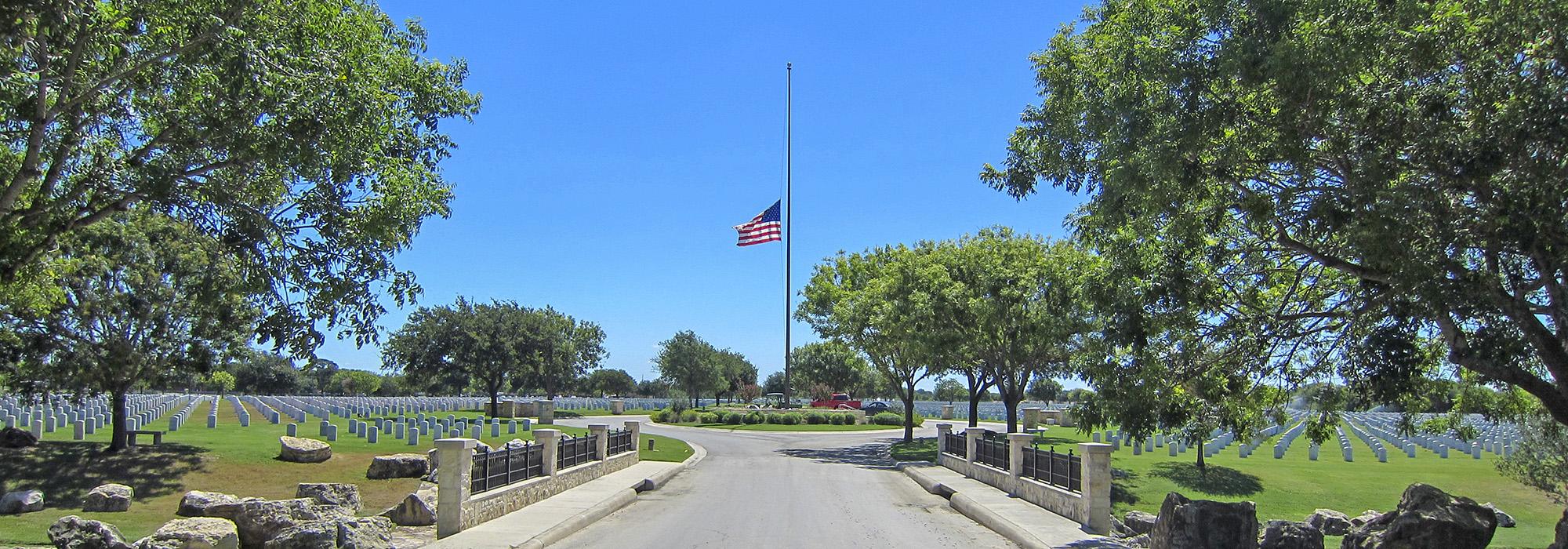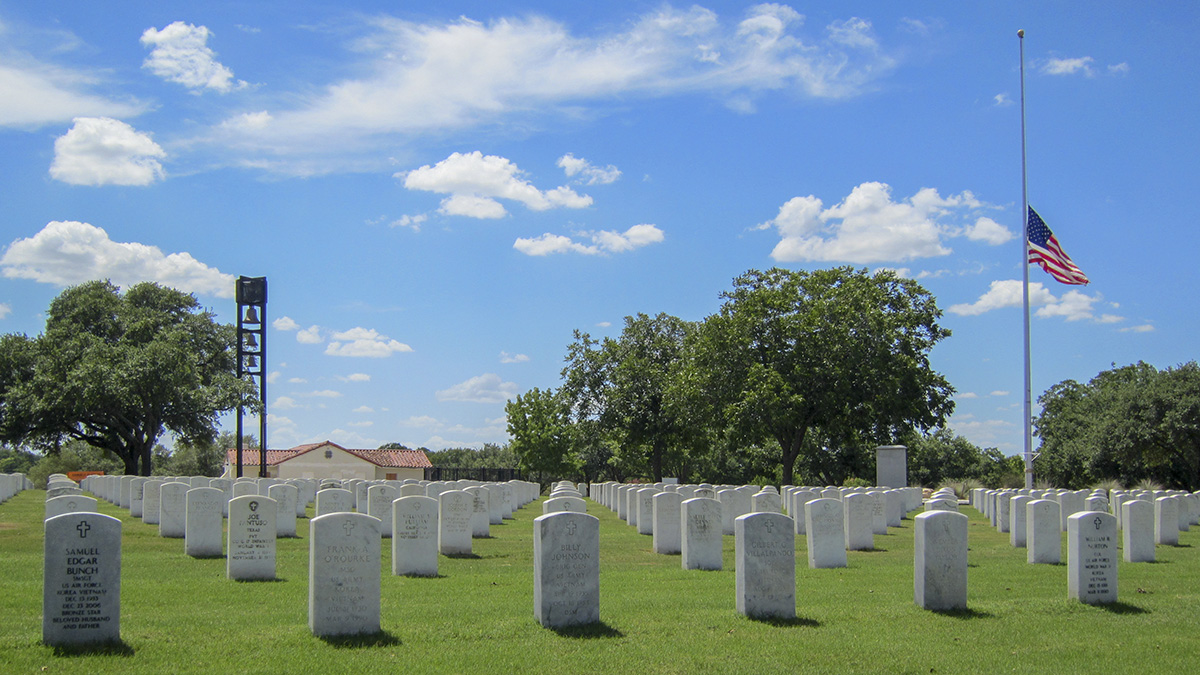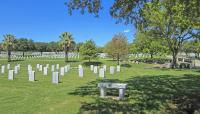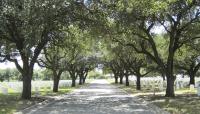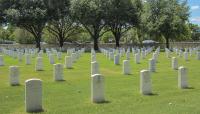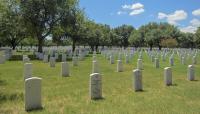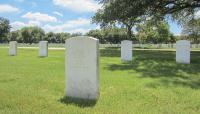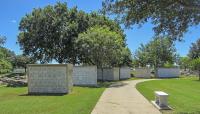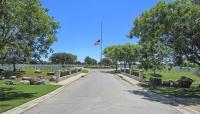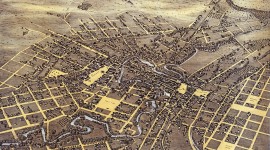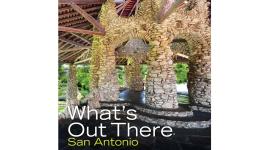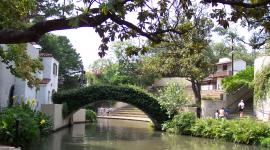Landscape Information
In 1924 a 60-acre burial ground was established just outside the northeastern boundary of Fort Sam Houston. By 1931 it was serving as an annex to the San Antonio National Cemetery and in 1937 became its own national cemetery to address the need for additional burial space.
A stone wall interrupted by the main entrance gate borders the cemetery along Harry Wurzbach Road. Upright white marble headstones are arranged in rows on a north-south axis among a manicured lawn punctuated by mature shade trees. The original 1920s circulation system included an oval-shaped road just within the main entrance. In 1938 a tall flagpole on a raised circular platform surrounded by boxwood hedges was added at the center of the oval-shaped road. As burials increased, the circulation system was extended in a grid pattern with large avenues flanked by oaks and sycamores. Between the 1970s and 2009 the cemetery was expanded farther east and south along Sam Houston Boulevard, past Nursery Road, to encompass a total of 338 acres. The new sections feature an extension of the gridded circulation system with an administration building, more than 2,000 columbaria niches, and an amphitheater-style assembly area along Fredericksburg Street. In 1947 a separate enclosure for burials of prisoners of war was established at the southeast corner of the property. The cemetery has since grown around this enclosure.
Today, the U.S. Department of Veterans Affairs manages the cemetery, where nearly 150,000 people are interred. Fort Sam Houston National Cemetery was listed in the National Register of Historic Places in 2016, both individually and as a contributing feature of the “Inter-World War National Cemeteries, 1934-1939.”



